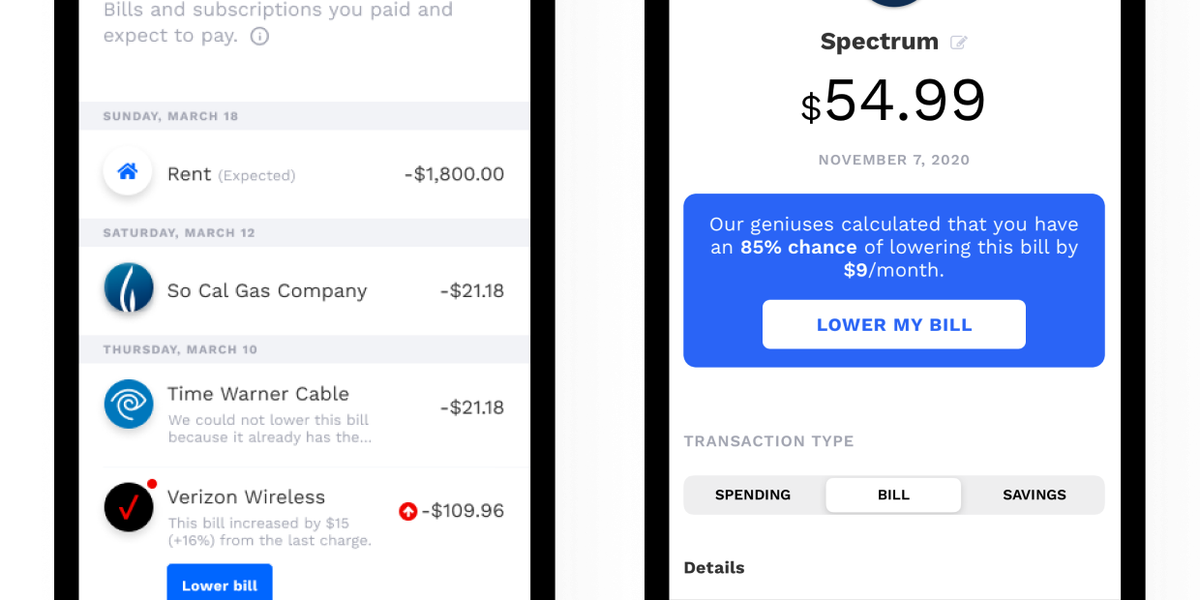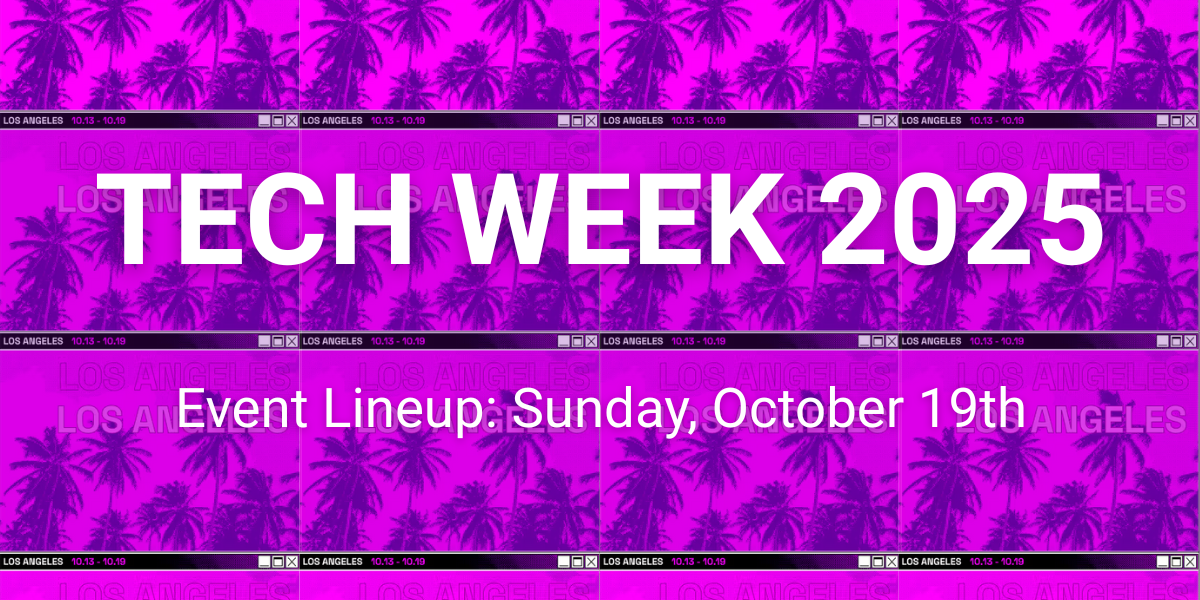

Get in the KNOW
on LA Startups & Tech
XGenies Builds Engineering Team With Ex-Snapchat Employees
Samson Amore
Samson Amore is a reporter for dot.LA. He holds a degree in journalism from Emerson College. Send tips or pitches to samsonamore@dot.la and find him on Twitter @Samsonamore.
Virtual avatar company Genies wants to be the go-to option for online personas and it's targeting the wealth of talent and seasoned executives from the area's biggest tech firm, Snap Inc., to help make that goal a reality.
Genies' latest hire from the Venice-based social camera company is George "YJ" Tu, a former senior engineer who worked on its Snapchat app and Spectacles camera glasses. Prior to working at Snap, Tu worked for three and a half years as a senior engineer at Facebook and specialized in developing the company's mobile infrastructure.
Tu joins Genies as its director of engineering. Genies CEO and founder Akash Nigam told dot.LA Tu's main mandate is hiring engineers to continue developing its avatar creation platform and digital marketplace, where users can buy and sell digital collectibles and wearable items for their virtual selves.
Tu is the first engineering executive the company's hired since its launch in 2017, but it plans to devote a big chunk of its recent $65 million Series B raise to attracting new talent.
"I think we've landed quite a few Snap employees for a few reasons," Nigam said. "Genies and Snap are probably the two biggest social companies on the Westside in LA, so I think that's an attraction for people that are already local."
The company already has some big celebrity names using its tech to make and share avatars -- including Justin Bieber, Rihanna and hip-hop tycoons Migos -- and the next step is to bring in more users.

George "YJ" Tu is Genies' new director of engineering.
Nigam said the company's hired close to 30 new employees in the last three months, with about 80% of those hires being engineers. He added that roughly 90 people work at Genies, and estimated that 10% of them are ex-Snap employees.
"I think from a product perspective, we share a lot of philosophies and we're very similar in the way that we scheme and we game plan. Snap always is kind of shooting a few years in advance specifically within the social category."
Matt Sibka, Genies' vice president of recruiting, spent three and a half years at Snap creating a team for its CEO Evan Spiegel and was hired to do the same at Genies earlier this year. Genies competes with Snap's Bitmoji avatars, which got a 3D upgrade this July.
"Eighty percent of new spend after our fundraise, and anything moving forward for the next two years, is all going to be on engineering to become an engineering powerhouse," Nigam said. Genies has raised $110 million to date and Nigam previously told dot.LA the company wants to make "Ninety nine point nine percent of its revenue from selling digital goods.
Nigam said that the synergy between Genies and Snap wasn't a conscious choice, but noted that both companies have a similar vision – to advance augmented reality and encourage people to adopt virtual avatars that they can increasingly use as an extension of how they express themselves online.
Nigam's plan is to integrate Genies avatars into as many applications as possible. Currently the company has a deal with Facebook's Giphy that will let users bring their avatar with them to platforms where Giphy is integrated, like Facebook, TikTok or Snapchat – but Nigam said it wants to bring its avatars to popular games like "Roblox" too.
"That's the first API partnership, but we want to have hundreds of those," Nigam said. "So all of a sudden if you get ported into 'Roblox,' you can get any avatar."
Genies' next big goal is getting Generation Z to buy into the NFT hype by creating unique items for their avatars and then trading them. Genies is working with Dapper Labs, which operates NBA Top Shot and CryptoKitties, two of the most popular NFT exchanges, to create its own blockchain-based system for creating, verifying and selling digital goods.
Genies plans to make the marketplace available by the end of this year. Right now it's only accessible to celebrities, but Nigam said it'll open a beta version to customers by year's end.
"It almost becomes like a login authentication button, where you can port your Genie and your digital goods associated with it from one environment to the next, and in that case, we're kind of creating a new digital identity layer," Nigam said.
From Your Site Articles
- You Can Now Create Your Own Avatar Using Genies' SDK ›
- Genies Now Allows Users to Create Their Own Avatars - dot.LA ›
- Meet Genies' New Head of Talent, Matt Skiba - dot.LA ›
- Genies Avatar Startup Raises $65 Million - dot.LA ›
- DNABlock Raises $7M to Help Web3 Creators Mint NFT Avatars - dot.LA ›
- Former Disney CEO Bob Iger Joins Avatar Startup Genies - dot.LA ›
Related Articles Around the Web
Samson Amore
Samson Amore is a reporter for dot.LA. He holds a degree in journalism from Emerson College. Send tips or pitches to samsonamore@dot.la and find him on Twitter @Samsonamore.
https://twitter.com/samsonamore
samsonamore@dot.la
Fintech Startup Albert Lays Off 20-Plus Employees: Sources
02:28 PM | June 10, 2022
Image courtesy of Albert
Albert, a Culver City-based fintech startup backed by investors including General Atlantic and Alphabet’s growth fund CapitalG, is in the process of laying off a chunk of its locally-based staff, dot.LA has learned.
At least 20 Albert employees were informed Friday that they were being laid off, multiple sources inside the company told dot.LA. The cuts affected members of the company’s Genius customer support team as well as its engineering, operations and legal staff.
Albert employees were notified that the company would be holding an internal meeting at 2 p.m. PT Friday. The six-year-old company—part of a wave of fintech startups that help customers plan and budget their financial lives—recently celebrated hitting 250 staffers, sources noted.
Representatives for Albert did not immediately return requests for comment on the layoffs.
Some Albert employees who were among those laid off have already posted on LinkedIn about looking for new work. According to sources at the company, Albert is looking to offshore jobs on its Genius customer support team to remote locations that offer cheaper labor. The startup already operates a team in the Philippines that handles customer support and is planning to launch another team overseas, they said.
One source with knowledge of Albert’s fundraising efforts said the company has been struggling to raise its upcoming Series D round amid an ongoing slowdown in venture capital funding. Albert most recently raised a $100 million Series C round last January led by General Atlantic that took the company’s total funding to more than $170 million.
Like its fellow L.A.-based fintech startup Dave, Albert is among a cadre of so-called “neo-banks” that provide digital financial services targeted toward millennial and Gen Z consumers. Albert’s offerings include a mobile banking app, access to cash advances, an investing platform and a savings tool.
Have a tip? Email samsonamore@dot.LA.
From Your Site Articles
- Albert Fintech Startup Lays Off 20-Plus Employees - dot.LA ›
- Hyundai Taps Electric Car Startup Canoo for Design Work ›
- Albert’s Layoffs Were Prompted By a Venture Funding Pullback - dot.LA ›
- Summer Game Fest Competes with E3 Gaming Conference in 2023 - dot.LA ›
- Financial Finesse Launches New VC Arm - dot.LA ›
Related Articles Around the Web
Read moreShow less
Samson Amore
Samson Amore is a reporter for dot.LA. He holds a degree in journalism from Emerson College. Send tips or pitches to samsonamore@dot.la and find him on Twitter @Samsonamore.
https://twitter.com/samsonamore
samsonamore@dot.la
Here's the Sunday, October 19th lineup for LA Tech Week 2025, organized by location so you can easily explore events that fit your goals and schedule. Dive in and see what’s happening near you!
ARTS DISTRICT
3:00 PM
- Spinovation - The Afterparty: See Details Here
Black Women Spin, Dope Candi
BEL AIR
3:00 PM – 7:00 PM
- Pickleball Networking: Investor & Founder Event: See Details Here
Blueberries.
BURBANK
6:30 PM – 9:30 PM
- Tech Comedy show: See Details Here
Cat Ce Comedy
CULVER CITY
9:00 AM – 5:00 PM
- Coworking @ Intersections LA: See Details Here
Intersections LA, Node CRM
4:30 PM – 7:30 PM
- Build.: See Details Here
Bosmos, Inc.
INGLEWOOD
10:00 AM – 2:00 PM
- Spinovation: The Future Is Femme, The Future is Frequency: See Details Here
Sonder Impact, Black Women Spin, Sip & Sonder
KOREATOWN
12:00 PM – 3:00 PM
- IMPACT TECH: See Details Here
Biotune Wellness, Hakawati, Astralab LA
MARINA DEL REY
12:00 PM
- Sunday Tech Brunch
Sawubona
MID CITY
9:00 AM – 11:00 AM
- Women in Cleantech Hike and Network: See Details Here
Women in Cleantech and Sustainability
SANTA MONICA
9:00 AM
- From Farm to Future: A Breakfast on Distribution: See Details Here
Frootful
10:00 AM
- SMART FASHION WEEK / LA: See Details Here
Metaverse Fashion Council
3:45 PM
- [AI x Experience Economy ]: See Details Here
Goodpass
4:00 PM – 7:30 PM
- OFF THE HOOK Santa Monica Seafood Festival: See Details Here
Spin PR Group, City of Santa Monica, Tech St.
6:00 PM
- Sunday Tech Wine Down: See Details Here
Los Angeles Fun Events
7:00 PM
- Pritam: A Musical Legend - Live in Concert: See Details Here
American South Asian Network
7:00 PM
- Building AI workflow editor in React with Workflow Builder SDK: See Details Here
Workflow Builder
7:00 PM
- Hack Comedy: An AI Comedy Show: See Details Here
Hack Comedy, Jesterlabs
8:00 PM
- Unlock Apple's Corporate Advantage for your Startup!: See Details Here
iStore by St. Moritz
TOPANGA CANYON
3:00 PM
- Dreamore Hike and Picnic: LA Tech Week: *Invite Only*
Dreamore
VENICE
10:00 AM – 12:00 PM
- Coffee, Walk, and Schmooze: See Details Here
JFE (Jews For Entrepreneurship) Network
VIRTUAL (LA)
10:00 AM
- Level Up with LinkedIn: A Student’s Guide to Networking & Opportunities (Virtual Event): See Details Here
FIMAC
10:00 AM
- 42Ville: Humanity's Mental Theme Parks: See Details Here
Office for Humanity
WEST ADAMS
1:00 PM – 3:00 PM
- CyberTales at Lore: Cyber Safety for Everyone: See Details Here
Genfinity Cyber
For updates or more event information, visit the official Tech Week calendar.
Enjoy LA Tech Week 2025!
Read moreShow less
RELATEDTRENDING
LA TECH JOBS


